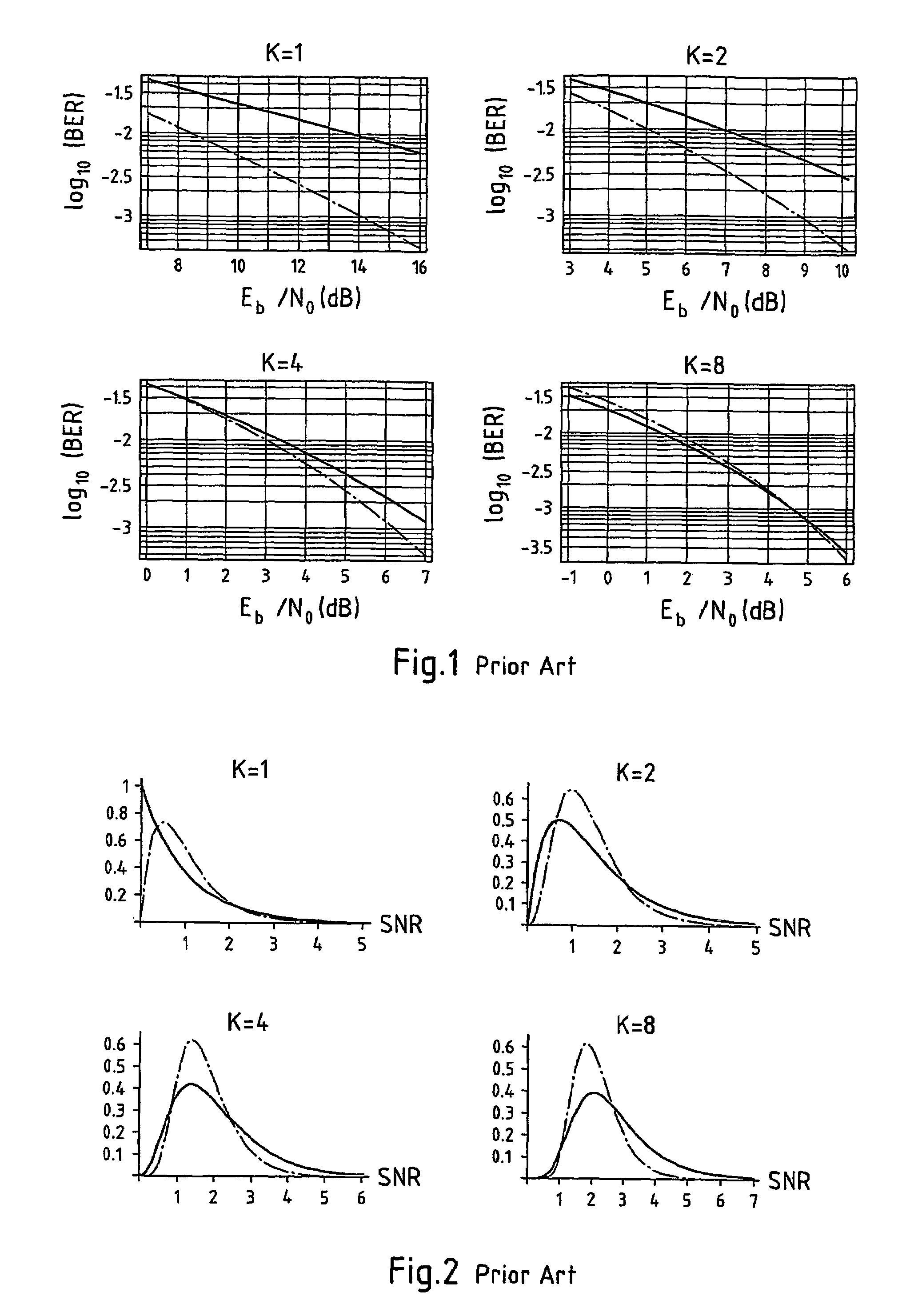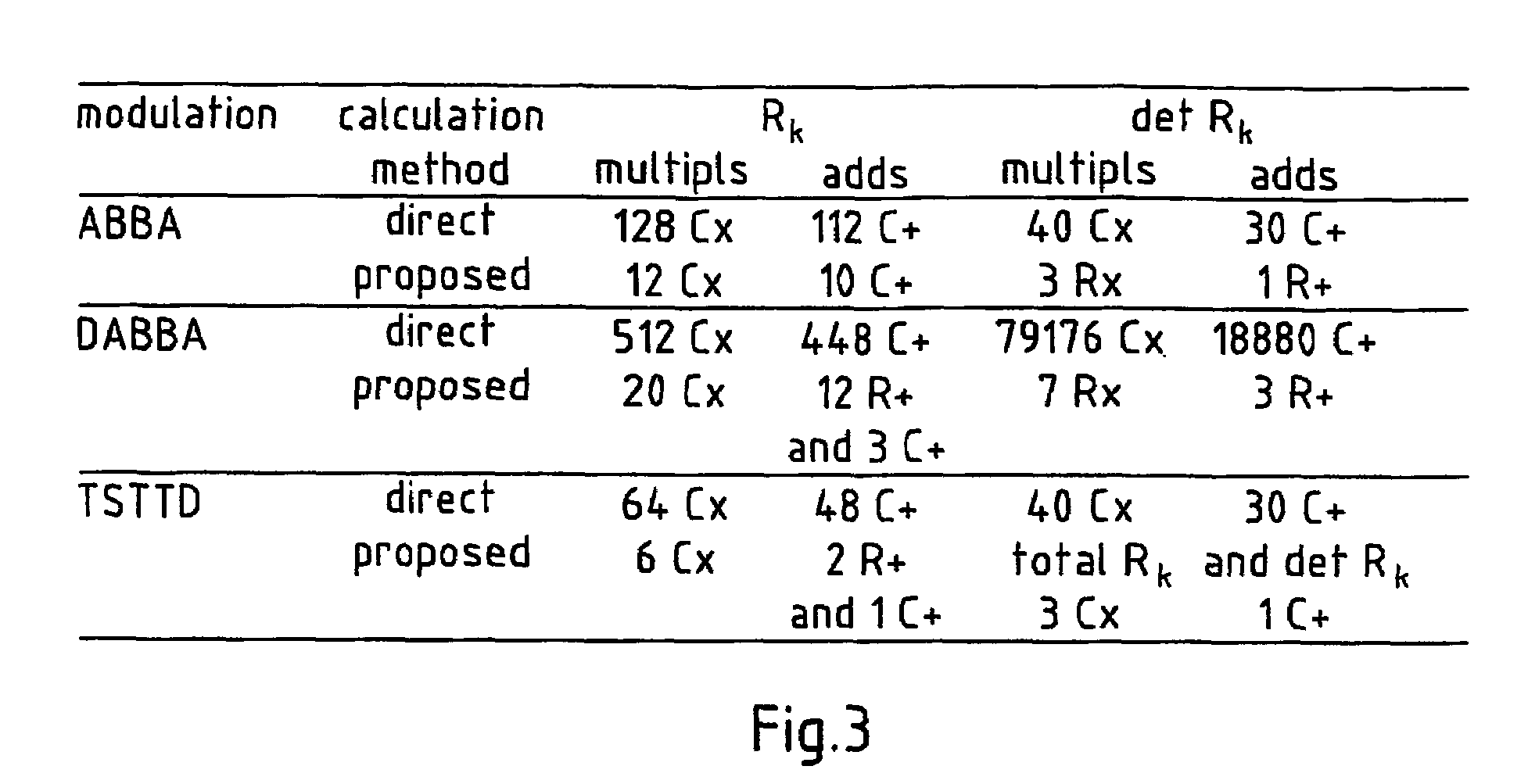Exploiting selection diversity in communications systems with non-orthonormal matrix and vector modulation
a communication system and selection diversity technology, applied in data switching networks, instruments, frequency-division multiplexes, etc., can solve the problems of reducing the average error rate, requiring heavy computation for scheduling based on direct evaluation of ber, and the price of making good ones wors
- Summary
- Abstract
- Description
- Claims
- Application Information
AI Technical Summary
Benefits of technology
Problems solved by technology
Method used
Image
Examples
Embodiment Construction
[0117]The present invention proposes to combine non-orthonormal matrix modulation with scheduling in a selection diversity setting. This approach may depend on the definition of the Channel Quality Indicator (CQI) that serves as a basis for the decision which of the K transmission channels are scheduled to be used for transmitting data symbols that are matrix modulated and transmitted by a transmitter.
[0118]The need for the definition of CQI's generally arises in situations where the transmission schemes need to be adapted according to the channel conditions, and different types of adaptation methods require different CQIs. Two distinct types of adaptation can be identified:
[0119]1. In systems with multiple transmission channels as the basis for resource allocation, for example scheduling methods in TDMA systems which allocate time slots to the transmission channel with the “best” channel. Here the CQIek should correlate with the performance the channel can support.
[0120]2. Choosing...
PUM
 Login to View More
Login to View More Abstract
Description
Claims
Application Information
 Login to View More
Login to View More - R&D
- Intellectual Property
- Life Sciences
- Materials
- Tech Scout
- Unparalleled Data Quality
- Higher Quality Content
- 60% Fewer Hallucinations
Browse by: Latest US Patents, China's latest patents, Technical Efficacy Thesaurus, Application Domain, Technology Topic, Popular Technical Reports.
© 2025 PatSnap. All rights reserved.Legal|Privacy policy|Modern Slavery Act Transparency Statement|Sitemap|About US| Contact US: help@patsnap.com



